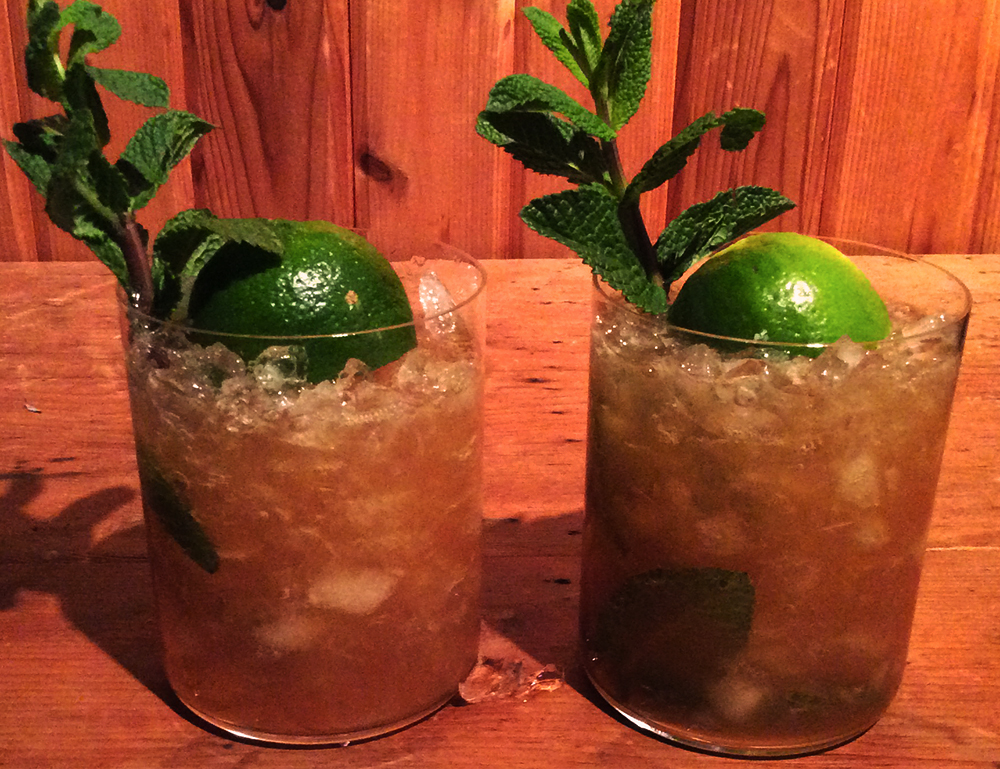
It’s the middle of winter (don’t let the unseasonable thaw fool you), and maybe you’re getting tired of the white stuff, the grey skies, or perhaps the short cold days have got you down? If that’s the case, I have just the cure for you: it’s mai tai time. Because if you can’t go to the tropics, the tropics can come to you. That the drink was created in a suburb of San Francisco by a man who had never been to the south Pacific is immaterial. Sort of, because maybe it was created by someone who had actually been to Polynesia, and maybe we’re not drinking the right cocktail at all (for several reasons that’s almost a given). Sounds complicated? It is. However, the drink I will encourage you to discover has been described as one of the best rum delivery systems ever invented (along with the daiquiri), and I agree completely.

As per usual, before I tell you what little I know about the mai tai and its history, here’s my version of the recipe (I claim no authenticity or gospel-like truth), so you can make yourself one and do some sipping and readin’. Yes, I do insist.
My mai tai
- 0.75 ounce of fresh lime juice
- 0.25 ounce of simple syrup
- 0.25 ounce of orgeat (an almond syrup)
- 0.5 ounce curaçao (I like to use a touch less)
- 2 or 2.5 ounces of significantly aged Jamaican rum (though it quickly gets more complicated, you might need to mix rums)
Crush enough ice to fill a medium sized glass, something like a large tumbler or a double old fashioned. Shake all ingredients on regular ice and then pour over the crushed ice. Garnish with mint and half a lime shell that will suggest an exotic island, should you be more artistic than I am.
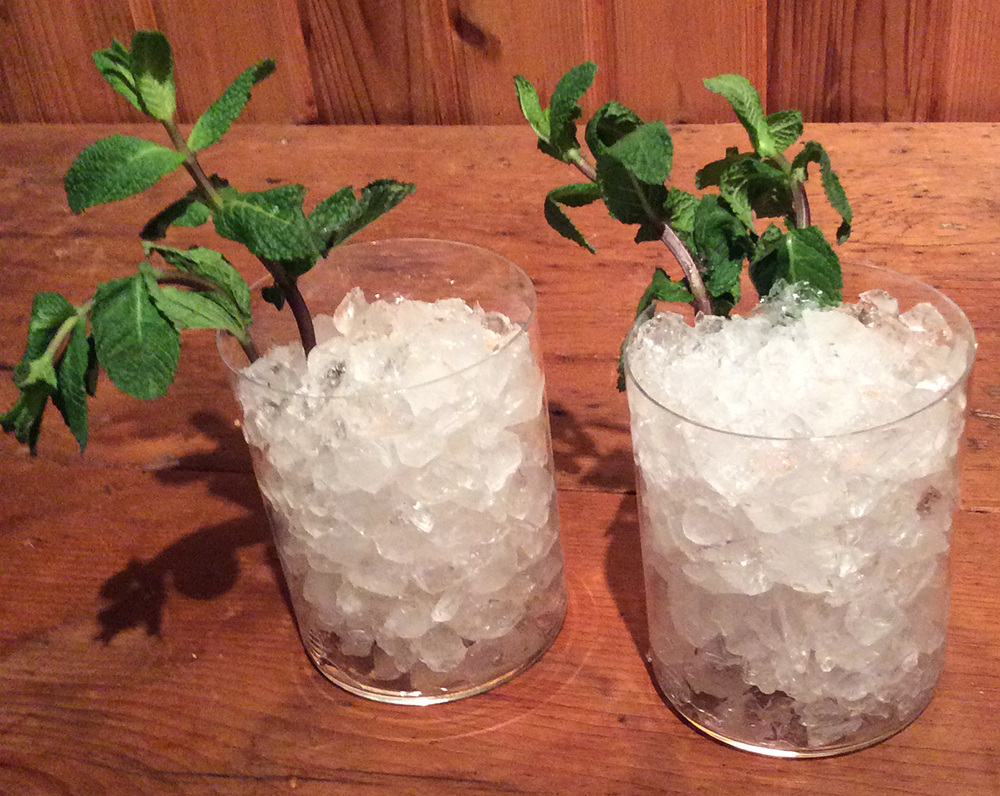
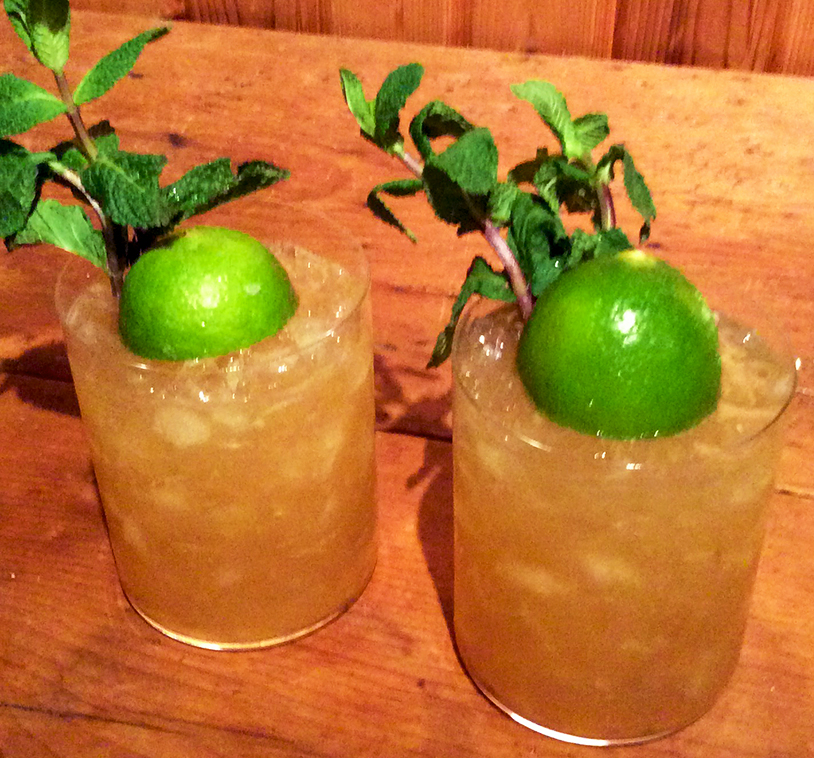
Sidebar: a quick note about crushed ice, which is integral to this drink. I use a 1950’s contraption that you definitely don’t want to get your fingers stuck inside of. However ice wrapped in a clean dish towel and bashed with pretty much anything hard (rolling pin, cast iron skillet, your fist) will do the trick nicely and bring a certain old school flair to the proceedings, while relieving you of your frustrations. Just use the appropriate visualization.
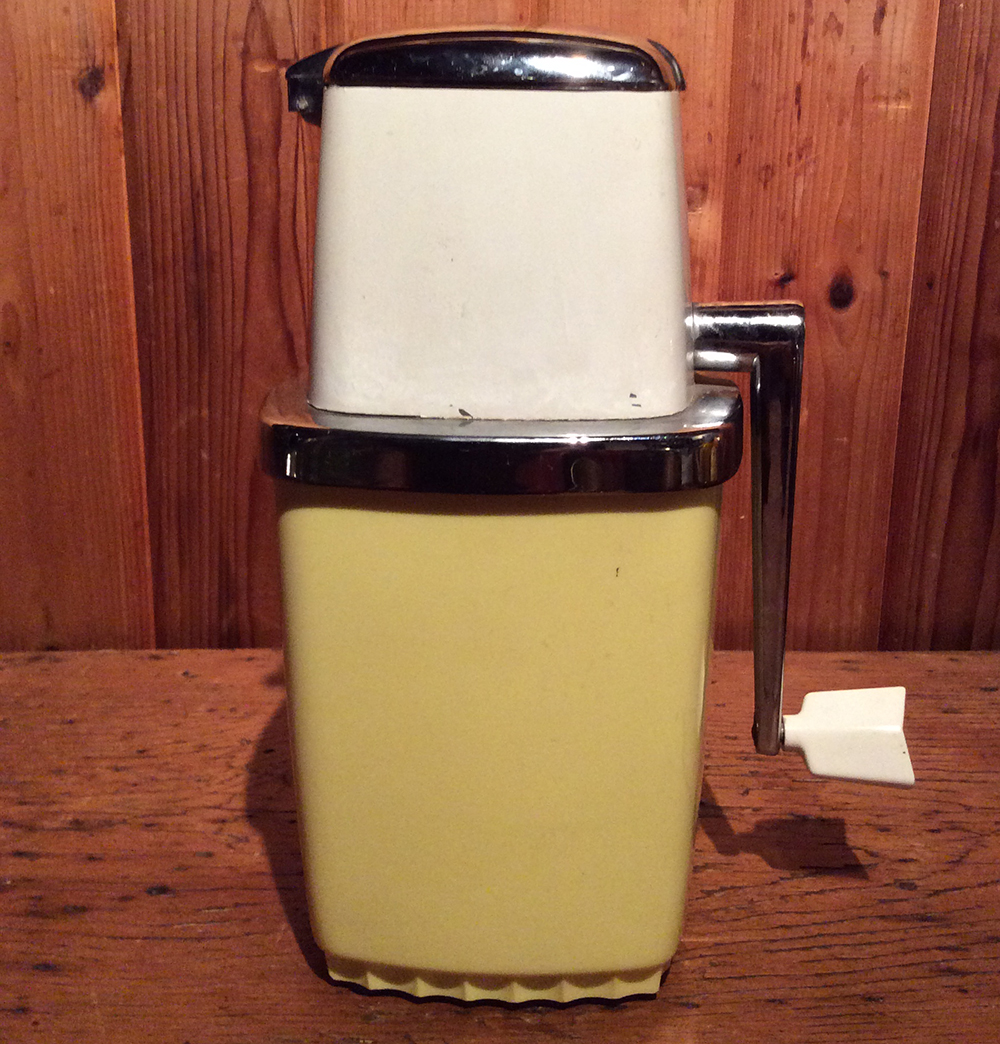
The mai tai is one of those drinks that has truly fallen from grace, perhaps even worse than the margarita or the whisky sour a few years ago. Admit that after reading the title, you immediately thought of a pinkish drink, or something with pineapple juice and layers. But no, as far as tiki drinks go, the mai tai is pretty Spartan in terms of ingredients. It’s a very far cry from the sugary hangover factories a lot of bars, especially in the tropics, will serve you. For different reasons that I’m half informed about, the mai tai is probably the most (mis)interpreted tiki drink there is. Why you may ask? Well, first some history (yay for everybody’s favourite way of looking at things!).
Most people will agree that the mai tai, in the form given above, is a creation of Victor “Trader Vic” Bergeron, who was sitting in his eponymous Oakland (California) bar in 1944, and was either a) trying to create a perfect rum drink when two friends, from Tahiti, walked in and asked for a cocktail, or b) was just chatting with said friends when they requested a cocktail, and he made it up on the spot. One of the guests, a lady named Carrie Guild, exclaimed “Maita’i roa a’e” in Tahitian, usually translated as “out of this world, the best”, hence the name. Good story, rare to have such clear facts when it comes to cocktails, or do we really?
Sidebar: who were these people travelling to California, from Tahiti, across the Pacific by boat, during the Second World War? Can you say hello Japanese submarines? I also find it interesting that Ms Carrie Guild new enough Tahitian to come up with a suitable phrase at a critical moment, there’s a story there that hasn’t been told.
One person who would disagree with the above version of events is Ernest “Donn Beach” Gantt, the one and only father of tiki. He claims to have invented the mai tai in 1933. From a historical perspective it gets fuzzy quickly because I have not researched this properly, I mean by using primary sources and archives and a couple of plane tickets, but wouldn’t it be cool if I could. It gets fuzzy because we’re not sure what Donn meant by that. Did he have a drink on his menus called the mai tai (unlikely since it is a somewhat obscure Tahitian phrase), or did he have a drink with a different name but identical ingredients? Neither it seems, to the best of my knowledge (so big caveat), he claims Trader Vic ripped off the flavour profile of one of his drinks called the Q.B. Cooler (apparently they do taste surprisingly alike), but the two drinks do not have the same ingredients… Is it possible that Vic was inspired by one of Donn’s creations? More than likely, in fact his whole business was inspired by the Don the Beachcomber bar and restaurant, that fact has never been disputed, but in my humble opinion the mai tai remains a separate and different drink, not the least because of the rum used.
This is where the trouble begins (or continues). There are three culprits to our inability to have an “authentic” mai tai today: phantom rum, secrecy and airplanes. So, in order then.
1. Phantom rum
The original rum used was J. Wray and Nephew’s 17 years old from Jamaica. The mai tai, however, proved hugely popular, surpassing the zombie as the official drink of the tiki movement, and supplies of 17 years old J. Wray quickly ran out. So Trader Vic promptly adapted and started using 15 years old J. Wray, which then also ran out. Oooops. In dire straits, he started experimenting with blends of different rums to come up with something that tasted similar, he ended up blending an aged Jamaican rum with a Martinique rum (Saint-James is sometimes cited) to create a similar effect. The trouble is currently, the Saint-James distillery produces both agricole and traditional or English style rums, and it is unclear which one Vic would have used… Yes, this keeps some people up at night.
Why not just find an old bottle of J. Wray for a taste and figure it out I hear you say? Because there’s none left. Well, that’s not true, I know of exactly one extant bottle, and it’s under lock and key in a temperature controlled room/vault. I’m guessing that bottle might fetch upwards of 50k if it was auctioned… Close to ten years ago, six lab sample bottles that would have been headed to analysis in the fifties (and were somehow misplaced, not all cocktail fans buy this story) surfaced, but those were around 75% ABV and not the 43% of the final product. On top of that, it seems the eventual buyers did not know quite what they had, some of the rum went into rum and cokes, and a Dublin bar made mai tais with one bottle for over 1400$ a pop. As far as I know it is all gone. In any case, rum will evolve in a bottle over a long period of time (yes it does), so even if you could taste a J. Wray 17 from 1944 (which btw contained a blend including spirits distilled possibly as early as 1915), it would taste differently today that it did when it was bottled. You’d no doubt get a good idea of what was going on, but it would be a changed product. So no time machine, no “authentic” mai tai…
Sidebar: Furthermore, Trader Vic used rock candy syrup (possibly a saturated version of simple syrup) and deKuyper curaçao, two ingredients not readily available, so no matter what we do, our mai tais will be different, rum not withstanding.
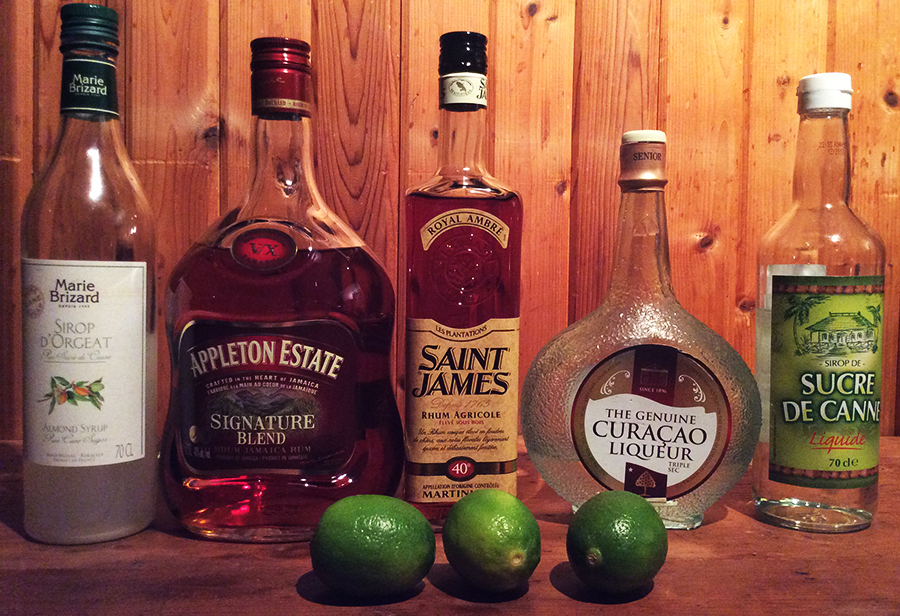
2. Secrecy
In tiki establishments, the cocktails were the big draw. Early on, Donn Beach took the measure of having all his cocktails prepared out of sight of the guests, and he used bottles without labels, only with numbers on them, so that even his mixers could not tell you exactly what went into each drink. If a competitor tried to poach staff or steal a recipe, all he would get would be “…the zombie is 2 ounces of #5, 1 ounce of #7…”. I could not verify this myself, but secondary sources claim that the mai tai’s recipe was absent from both of Trader Vic’s cocktail books, even the second one, published as late as the 1970’s! You can guess at the perceived importance of that recipe for Vic’s chain of restaurants and its role in keeping the clients coming through the doors.
All this secrecy did however, was motivate people to recreate/create their own mai tai’s, and quite possibly many of the recipes floating around today (some even include grenadine, shudder) come from such attempts. There’s a story that illustrates this rather well. It’s 1954 and Harry Owens (composer of Sweet Leilani), and Andrew Geer (author of many books, including the Sea Chase turned into a movie starring John Wayne and Lana Turner, poor bastard doesn’t even have a Wikipedia entry, talk about famous in your day forgotten now) waltz into the Royal Hawaiian Hotel. They will be later joined by Pulitzer winning author James Michener whom we’ve met before. Writers and cocktails heh? The story goes that it’s nine a.m. and the boys want a mai tai (again, writers and cocktails), a bartender is called for, but he doesn’t know the recipe. Undeterred, the three men will, in front of a growing audience, persevere with tests until they recreate something that they agree tastes right. They are almost hailed as heroes, the drink is added to the bar’s menu, and the Royal Hawaiian Surf Bar is renamed the Mai Tai Bar.
What’s peculiar about this story, is that just the year before, 1953, Trader Vic himself was at the very same hotel, as he had been commissioned to come up with a few drinks for their menu (to be precise, it was the drinks menu of the hotels of the steamship line Matson, who also owned the Royal Hawaiian), and yet on that fateful morning the staff could not produce one (more secrecy?), and it took the drinking and mixing efforts of three, albeit renowned, thirsty guys to add the drink to the menu (it should have been there already) and have the bar thus renamed. Things that make you go hmmmm….. The Mai Tai Bar still exists today, and their menu still claims Trader Vic created a mai tai variation for them, using pineapple juice… (strange heresy coming from Vic), which was in fact found in the Owens/Geer/Michener version. Anyways, my belaboured point, was that without an official recipe, the mai tai could be pretty much anything people liked that reminded them of something else they once had that was called a mai tai, which may, or not, have been Trader Vic’s drink.
3. Airplanes, (and greed)
Before the late 50’s early 60’s, the only way to get to Hawaii for 99% of the people was by ship. The trip from the west coast to Honolulu took about five days. That means you did not go to Hawaii for a long weekend or even a week. Even if you stayed only two weeks, it still meant you had to take almost a full month off work. Clearly, that wasn’t for everyone. Prior to World War II there were about 30 000 tourists visiting Hawaii, that number had jumped to 250 000 in 1959 when air travel was becoming more routine. What does this have to do with our cocktail (BTW you’re due for another)? Well, all these people ordered the same drink, the mai tai, and that led to frenzied hotel staff working faster to produce more drinks but also cutting corners and changing ingredients to reduce costs (pineapple juice rather than limes for example) and increase the old profit margins, and that’s just what they did, bastardized a great drink in the name of Mammon. That perhaps, was the greatest slap in the face of that noble cocktail, hundreds of thousands of tourists going back home with a sweet colorful vision of a drink called the mai tai, which was anything but.
Presidential sidebar: the mai tai was Richard Nixon’s favourite cocktail, he would frequently sneak out late in the evening from the White House to enjoy a drink at D.C.’s branch of Trader Vic’s. There was also a Trader Vic’s in New York city’s Plaza Hotel, but it was closed in 1989, after its then owner, Donald Trump, decided it was “tacky”.
In conclusion
The mai tai is not an easy drink to make well, you have to balance the flavours just right, have lots of crushed ice on hand, and because it’s such a rum forward drink you will have to modify your different proportions each time you fiddle with the rum(s), which you should. There’s something I like about the ethos of being willing to mix using a 17 years old rum, it has panache. Many purists (may they be confounded) would no doubt throw rocks at you in the street for doing such a thing today, but as I’ve read somewhere, outstanding cocktails need outstanding rums.
It’s true that we can never know what the original mai tai tasted like, but it certainly should not keep us from seeking our own liquid paradise until we can exclaim, echoing the past: “maita’i roa a’e”: the best, out of this world!
If you haven’t had one yet, I hope I gave you the urge to try it out.
Talk to you soon.

Drinking originals….
Yet another reason to get on that time machine invention….
If only I wasn’t always inturupted with the drinking…
I probably would have finished it by now….
So I take it you agree to come over and sample said drink sometimes in the next future?
When have we ever refused an invitation?
At your service, sir!